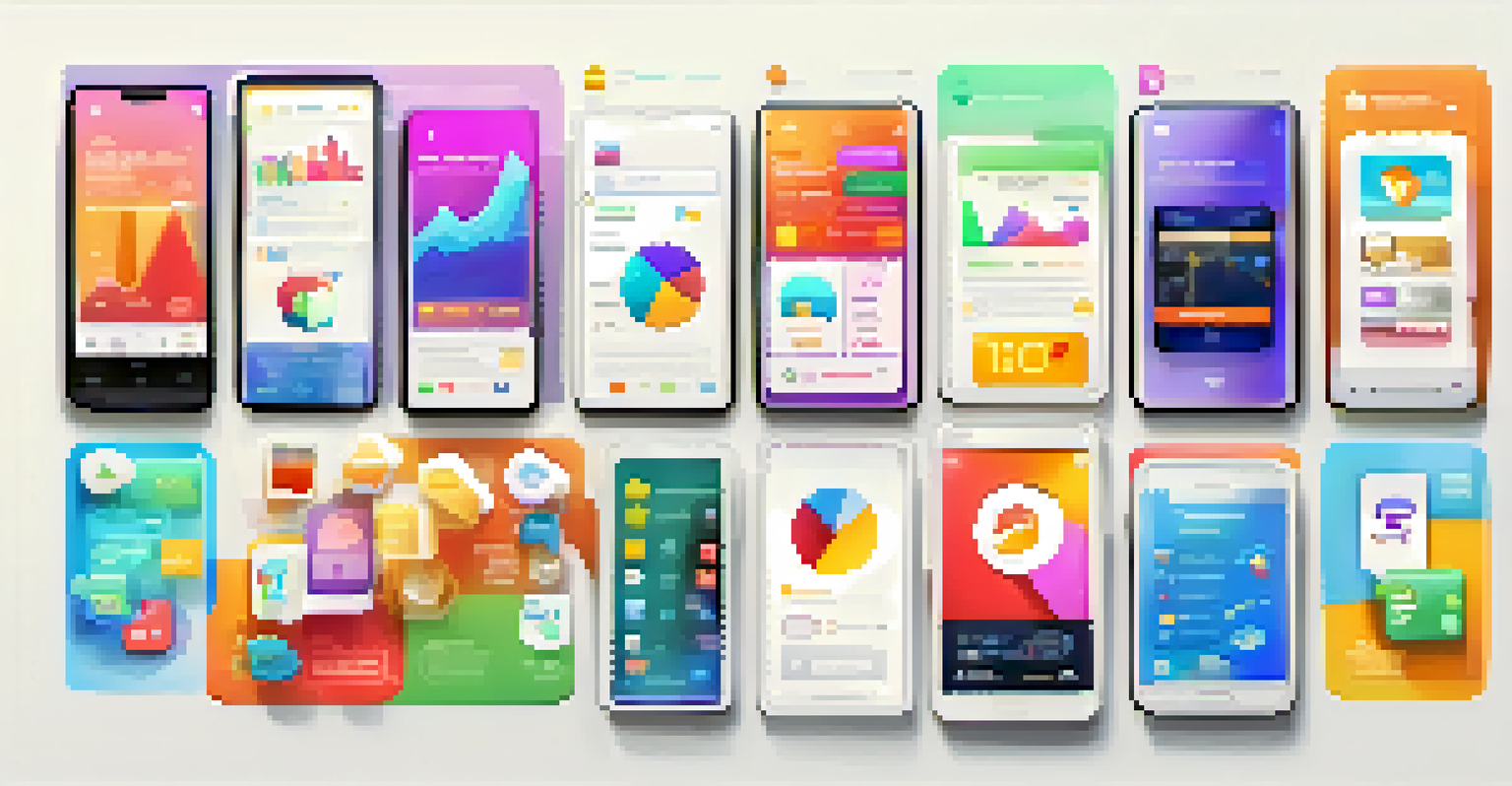Mobile App Monetization Strategies: Maximizing Revenue Growth

Understanding Mobile App Monetization Basics
Mobile app monetization involves strategies to generate revenue from apps. It's essential to choose the right approach that aligns with your app's purpose and audience. Understanding the basics of monetization can help you decide whether to charge users upfront, offer in-app purchases, or utilize ads.
The best way to predict the future is to create it.
With millions of apps available, choosing a monetization strategy can feel overwhelming. However, knowing your target audience and their preferences can simplify the decision-making process. For example, a gaming app may benefit from in-app purchases, while a utility app might thrive with a subscription model.
Ultimately, the goal of monetization is to create a sustainable income stream while still delivering value to your users. A balance between user experience and revenue generation is crucial for long-term success. This foundational understanding sets the stage for exploring specific strategies.
Freemium Model: Attracting Users with Free Access
The freemium model offers users free access to the basic features of an app while charging for premium features. This strategy can significantly increase your user base, as many users are drawn to free offerings. Once users engage with your app, they may be more likely to upgrade for added benefits.

For instance, popular apps like Spotify and LinkedIn use this model effectively. Users can enjoy a free version, but premium features, such as ad-free listening or advanced networking tools, are behind a paywall. This creates a sense of exclusivity and encourages users to convert to paying customers.
Choose the Right Monetization Model
Selecting a monetization strategy that aligns with your app's purpose and audience is crucial for generating revenue.
However, it's vital to strike the right balance between free and premium features. If too much value is offered for free, users may not see the need to pay. On the other hand, if the free version is too limited, potential users might not be enticed to download your app at all.
In-App Purchases: Boosting Engagement and Revenue
In-app purchases (IAP) allow users to buy additional content or features within the app. This strategy is particularly effective in gaming, where users can purchase virtual goods or enhancements to improve their experience. The key is to create compelling offerings that enhance user engagement and satisfaction.
In the age of information, ignorance is a choice.
For example, a mobile game might offer cosmetic items, extra lives, or special levels as in-app purchases. These items can be enticing, as they often provide users with a sense of accomplishment or personalization. By creating a sense of urgency—like limited-time offers—developers can encourage users to make purchases.
While IAP can significantly increase revenue, it’s important to avoid being overly aggressive. If users feel pressured to spend money to enjoy the app, they may abandon it altogether. Striking the right balance ensures that users feel satisfied and valued.
Subscription Models: Ensuring Recurring Revenue
Subscription models involve charging users a recurring fee for access to your app's content or features. This approach creates a predictable revenue stream and fosters long-term user relationships. Many successful apps, like Netflix and Headspace, rely on this model for financial stability.
Subscriptions can take various forms—weekly, monthly, or yearly—allowing users to choose what works best for them. Offering a free trial period can also entice users to experience the app before committing to a subscription. This can significantly boost conversion rates and user satisfaction.
Balance User Experience and Revenue
Striking the right balance between user satisfaction and revenue generation is key to long-term app success.
However, maintaining the value of a subscription is essential. Regular updates, new content, and improved features keep users engaged and justify the ongoing cost. Providing excellent customer support and addressing user feedback can further enhance user loyalty and retention.
Ad-Based Monetization: Leveraging Advertisements
Ad-based monetization involves displaying ads within your app to generate revenue. This can be an effective strategy if you have a large user base. By collaborating with ad networks, developers can earn money based on impressions, clicks, or user actions.
While this strategy can be lucrative, it’s important to ensure that ads do not disrupt the user experience. Intrusive ads can lead to user frustration and app abandonment. Integrating ads smoothly and strategically can help maintain a positive user experience while still generating revenue.
Additionally, targeting the right audience with relevant ads can enhance engagement and click-through rates. Utilizing analytics to understand user behavior can help tailor ad placements and improve overall monetization effectiveness.
Sponsorships and Partnerships: Collaborative Revenue Streams
Sponsorships and partnerships involve collaborating with brands or companies to generate revenue. This can take the form of sponsored content, branded experiences, or affiliate marketing. Such collaborations can provide mutual benefits for both parties and enhance the user experience.
For example, a fitness app might partner with a sportswear brand to offer users exclusive discounts on gear. This not only provides value to users but also generates revenue for the app through affiliate links. It’s a win-win situation that can create a sense of community among users.
Leverage Data for Better Insights
Utilizing user data can create additional revenue opportunities while ensuring transparency and user privacy.
However, it’s crucial to choose partners that align with your brand values and user interests. Authenticity and relevance are key to maintaining user trust. Successful partnerships can lead to increased user engagement and a boost in revenue.
Data Monetization: Harnessing User Insights
Data monetization involves leveraging user data to create revenue opportunities. Analyzing user behavior and preferences can provide valuable insights for targeted marketing campaigns. Many companies are willing to pay for access to this type of data, creating an additional revenue stream.
For instance, app developers can aggregate anonymized data to identify trends and patterns. This information can then be sold to market research firms or brands looking to understand consumer behavior. It’s essential, however, to prioritize user privacy and comply with data protection regulations.

Transparency is crucial when it comes to data monetization. Users should be informed about what data is collected and how it will be used. By building trust and ensuring ethical practices, developers can turn user data into a valuable asset.
Choosing the Right Strategy for Your App
With various monetization strategies available, choosing the right one for your app can be challenging. It’s essential to consider your target audience, app type, and overall business goals. Combining multiple strategies can also provide flexibility and maximize revenue potential.
For example, a productivity app might offer a freemium model while also incorporating ads for free users. Meanwhile, premium users could enjoy an ad-free experience along with exclusive features. This approach caters to different user segments and enhances overall revenue.
Ultimately, testing and iterating on your chosen strategy is vital. Gathering user feedback and analyzing performance metrics can help fine-tune your monetization approach. By staying adaptable, you can ensure your app remains profitable while delivering value to users.